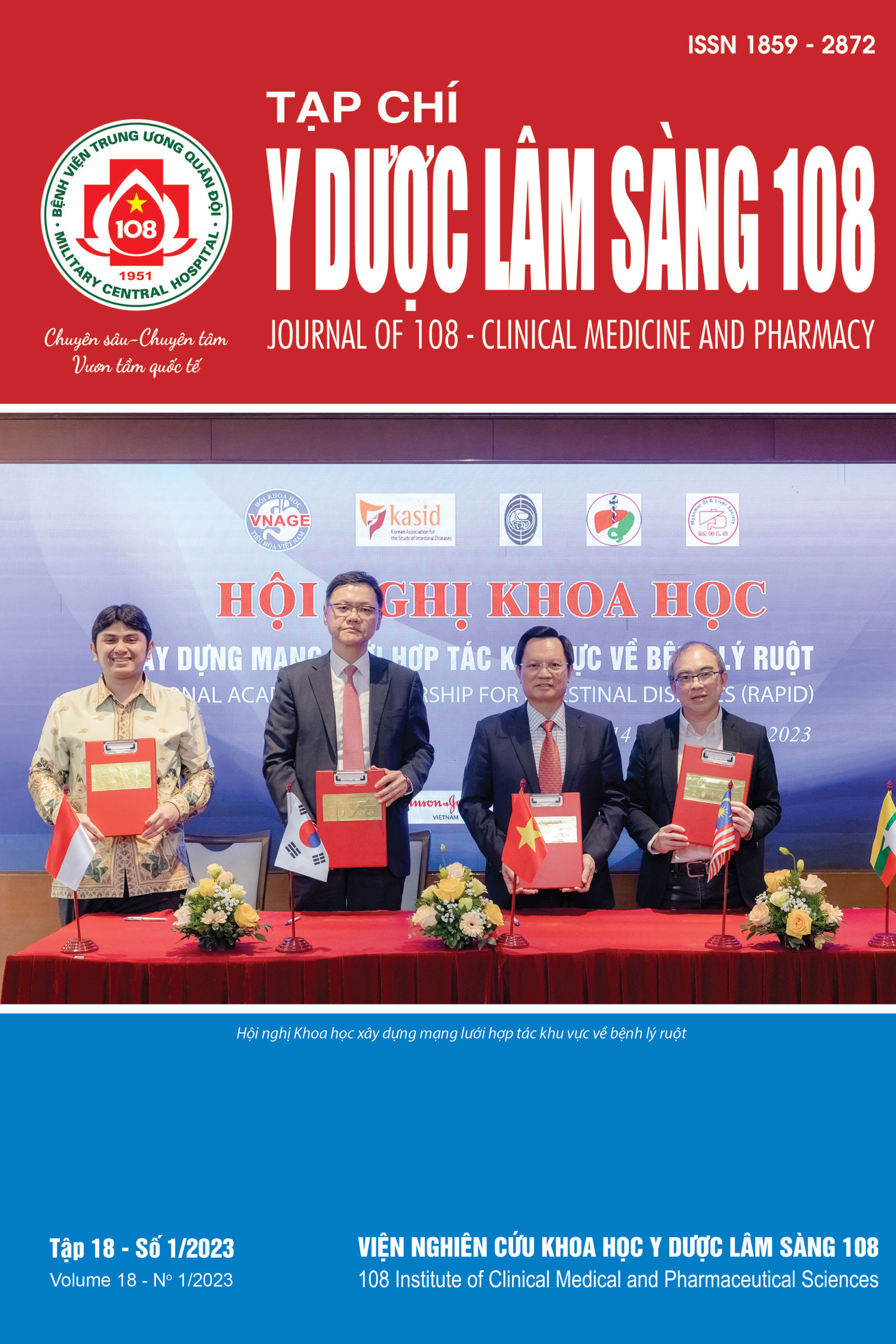Research for clinical, subclinical and technical characteristics of shock wave therapy in patients with ischemic heart disease
Main Article Content
Keywords
Abstract
Objective: To investigate the clinical, subclinical and technical characteristics of shock wave therapy in patients with ischemic heart disease. Subject and method: This is a prospective, cross-sectional study on 65 patients with ischemic heart disease with indications cardiac shock wave therapy managed at Internal Cardiology Department of the 108 Military Central Hospital from March 2017 to March 2021. All patients were performed clinical examination and laboratory tests, learn risk factors onset. Result: The average age of the study group was 72.2 ± 10.1 years, men accounted for 78.5%. The rate of chest pain grade of CCS 2 (24.6%); CCS 3 (58.5%); CCS 4 (16.9%). There was no sign of myocardial ischemia on the electrocardiogram (30.3%), old myocardial infarction accounted for 32.2%. Ejection fraction (EF) Simsons 44.89 ± 12.27%, wall motion septal index (WMSI) 1.54 ± 0.18; global longitudinal strain (GLS) -10.28 ± 2.82. The number of patients without intervention were 27.7%, with PCI (61.5%), with CABG (7.7%), with PCI and CABG (3.1%). Damage to multiple branches of coronary artery (55.4%). Severe severity of multiple coronary artery stenosis (50.8%). The percentage of severe perfusion defects (46.2%) and large perfusion defect (60%). Average total pulse output 6269.2 ± 816.6 pulses. The average number of zones and pulse generation time were 7.72 ± 1.48 zones and 128.6 ± 45.64 minutes, respectively. The highest percentage of pulsed areas was the apical region (93.8%), the lowest was the lateral wall 30.2%. There was no rise of cardiac enzymes and complicated arrhythmias were not observed during the study period. Conclusion: Patients with chronic ischemic heart disease in shockwave therapy treatment group are often older, have many risk factors, coronary artery lesions are many and complicated, and the degree of perfusion defect is severe and extensive.
Article Details
References
2. Bourassa MG (2002) Effect of prior revascularization on outcome following percutaneous coronary intervention; NHLBI Dynamic Registry. Eur Heart J 23(19): 1546-1555.
3. Gianluca A, Sebastiano M (2015) The beneficial effect of extracorporeal shockwave myocardial revascularization in patients with refractory angina. Cardiovascular Revascularization Medicine 16(1): 6-11.
4. Knuti J, Wijns W (2019) ESC Guidelines for the diagnosis and management of chronic coronary syndromes The Task Force for the diagnosis and management of chronic coronary syndromes of the European Society of Cardiolog. Eur Heart J.
5. Medispec (2006) Operating Manual CS2X400. Germantown, Maryland, USA.
6. Prasad M, Wan Ahmad WA, Sukmawan R et al (2015) Extracorporeal shockwave myocardial therapy is efficacious in improving symptoms in patients with refractory angina pectoris - a multicenter study. Coronary Artery Disease 26(3): 194-200.
7. Montalescot G, Sechtem U (2013) ESC Guidelines on the management of stable coronary artery disease. Eur. H. Journal 34: 2949-3003.
8. Shkolnik E, Burneikaitė G, Jakutis G, Scherbak M, Zuozienė G, Petrauskienė B (2018) A randomized, triple-blind trial of cardiac shock-wave therapy on exercise tolerance and symptoms in patients with stable angina pectoris. Coron Artery Dis Coronary Artery Disease 29(7): 579-586.
9. Takakuwa Y, Sarai M, Nagahara Y (2017) Extracorporeal shock wave therapy for coronary artery disease: Relationship of symptom amelioration and ischemia improvement. Asia Ocean J Nucl Med Biol 6(1): 1-9.
10. Vainer J, Habets J, Waltenberger J (2010) Cardiac shockwave therapy in patients with end-stage coronary artery disease and chronic refractory angina pectoris - mild term results. Eur. Heart J 31(1): 198.
 ISSN: 1859 - 2872
ISSN: 1859 - 2872
